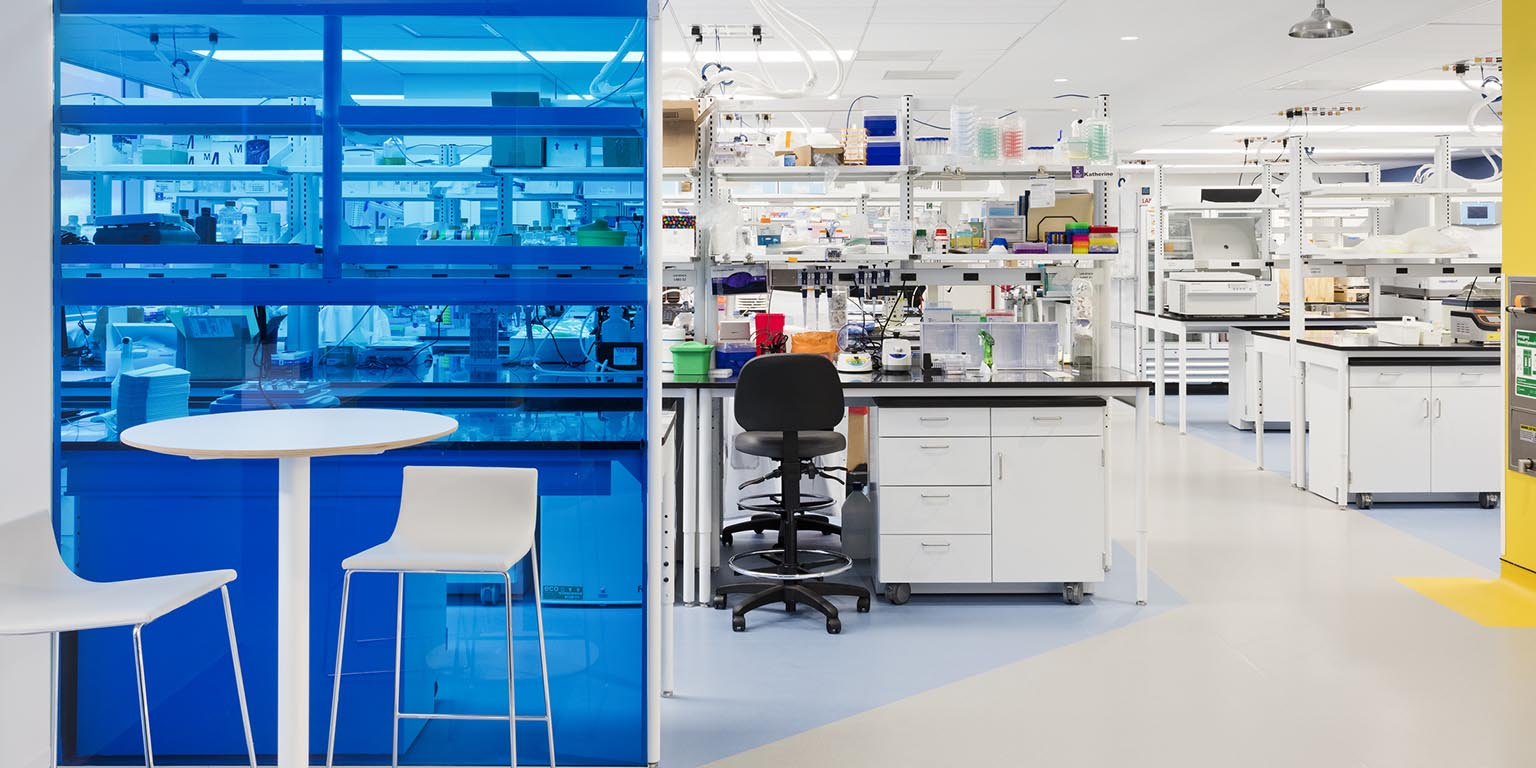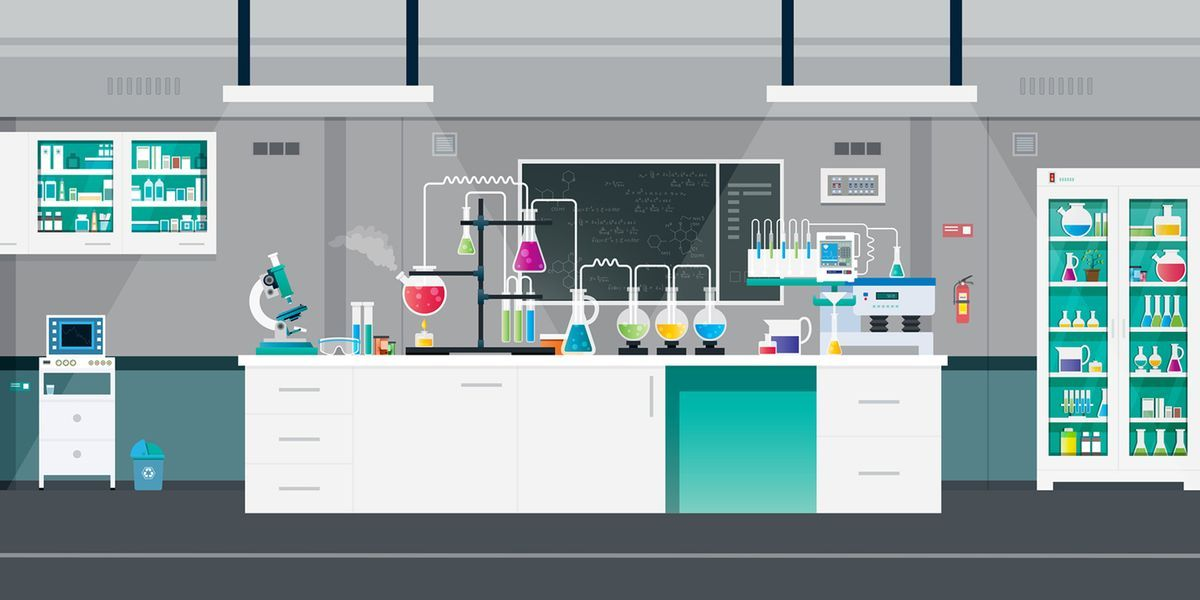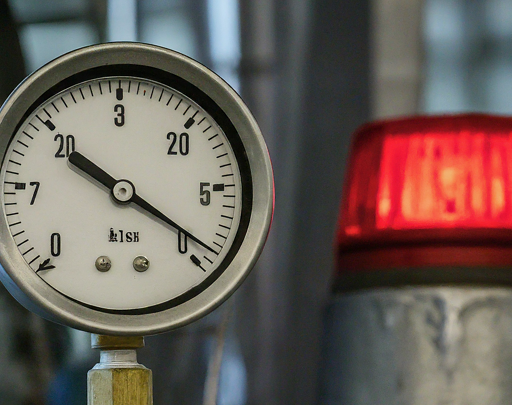Selecting finishes and furniture for lab ergonomics

Laboratory Interiors: The Foundation for Efficient and Safe Workspaces

In the realm of scientific research and development, laboratories serve as the epicenter of innovation, where groundbreaking discoveries are made and technological advancements are realized. The efficiency and safety of these spaces are paramount, directly impacting the productivity and well-being of researchers, technicians, and other personnel. A critical aspect of achieving optimal laboratory performance lies in the careful consideration of its interior design, encompassing the selection of finishes and furniture that promote ergonomics and enhance overall functionality.
The concept of ergonomics, the science of designing and arranging workspaces to optimize human well-being and performance, is particularly relevant in laboratory settings. Laboratories often involve complex and demanding tasks, requiring prolonged periods of standing, sitting, and repetitive movements. These activities can lead to musculoskeletal disorders, fatigue, and reduced productivity if not addressed through proper ergonomic design. Furthermore, the presence of hazardous materials and equipment necessitates a focus on safety, which is intrinsically linked to the layout and design of the laboratory.
Traditionally, laboratory interiors have often been characterized by a utilitarian approach, prioritizing functionality over aesthetics and comfort. However, this paradigm is shifting as the scientific community increasingly recognizes the profound impact of the work environment on research outcomes. A well-designed laboratory interior can foster a sense of order, clarity, and inspiration, contributing to a more positive and productive research experience.
The selection of finishes and furniture plays a pivotal role in creating an ergonomic and efficient laboratory environment. Finishes, such as flooring, walls, and ceilings, influence the overall ambiance and acoustics of the space. Furniture, including workstations, storage units, and seating, directly impacts the comfort and posture of lab personnel. By carefully considering the specific needs and requirements of the laboratory, it is possible to create an interior that optimizes both functionality and ergonomics.
This article delves into the crucial aspects of selecting finishes and furniture for laboratory ergonomics, providing insights and recommendations for creating a workspace that enhances efficiency, safety, and well-being. We will explore the key considerations for each element, highlighting the importance of integrating ergonomic principles into the design process. By understanding the impact of these choices on the overall laboratory environment, decision-makers can make informed decisions that contribute to a more productive and fulfilling research experience.
Laboratory Interiors: A Comprehensive Guide to Ergonomics in Lab Design
The modern laboratory is a dynamic environment, demanding a delicate balance between functionality, safety, and comfort. While the focus often falls on cutting-edge equipment and advanced technologies, the often-overlooked element of laboratory interiors plays a crucial role in shaping the overall efficiency and well-being of researchers and technicians. This article delves into the critical aspects of laboratory ergonomics, exploring how the selection of finishes and furniture can significantly impact productivity, safety, and the overall success of scientific endeavors.
The Importance of Ergonomics in Laboratory Design
Ergonomics, the science of designing and arranging things to optimize human well-being and overall system performance, is paramount in laboratory settings. A well-designed laboratory interior minimizes physical strain, reduces the risk of injuries, and fosters a more productive and comfortable work environment. The impact of ergonomics extends beyond individual comfort, influencing the quality of research, the accuracy of experiments, and the overall efficiency of the laboratory.
The traditional laboratory, often characterized by cold, sterile surfaces and rigid, uncomfortable furniture, is slowly giving way to a more human-centric approach. This shift recognizes the importance of creating a workspace that supports the physical and mental well-being of researchers. A well-designed laboratory interior can:
- Reduce the risk of musculoskeletal disorders (MSDs): Prolonged standing, repetitive motions, and awkward postures are common in laboratory settings, leading to MSDs such as carpal tunnel syndrome, back pain, and neck strain. Ergonomic furniture and workspaces can significantly mitigate these risks.
- Enhance productivity and efficiency: A comfortable and well-organized laboratory environment reduces distractions and fatigue, allowing researchers to focus on their work and achieve optimal productivity.
- Improve safety: Ergonomic design principles can minimize the risk of accidents and injuries by ensuring clear pathways, adequate lighting, and easy access to safety equipment.
- Promote collaboration and communication: Well-designed laboratory interiors can facilitate collaboration and communication among researchers, fostering a more dynamic and innovative research environment.
Key Considerations for Selecting Finishes and Furniture
The selection of finishes and furniture for a laboratory is a multifaceted process that requires careful consideration of various factors. The following sections delve into the key considerations for creating an ergonomic and functional laboratory environment.
1. Flooring
The flooring in a laboratory plays a crucial role in safety, comfort, and overall aesthetics. The ideal flooring material should be:
- Durable and resistant to chemicals and spills: Laboratory floors are exposed to a wide range of chemicals and spills, so the flooring material must be resistant to these substances and easy to clean.
- Slip-resistant: Wet floors can be hazardous, so slip-resistant flooring is essential for preventing accidents and injuries.
- Comfortable for standing: Researchers often spend long hours standing, so the flooring should be comfortable and provide adequate support.
- Quiet: Excessive noise can be distracting and disruptive in a laboratory setting, so choosing a quiet flooring material is important.
Common flooring materials for laboratories include:
- Epoxy flooring: Epoxy flooring is a durable and chemically resistant option that is easy to clean and maintain. It is often used in high-traffic areas and areas where chemical spills are common.
- Vinyl flooring: Vinyl flooring is a versatile and affordable option that is available in a wide range of colors and patterns. It is also slip-resistant and easy to clean.
- Ceramic tile: Ceramic tile is a durable and stain-resistant option that is often used in laboratories. It is also easy to clean and maintain.
- Rubber flooring: Rubber flooring is a comfortable and slip-resistant option that is often used in areas where standing for long periods is required. It is also sound-absorbing, which can help to reduce noise levels.
2. Walls
Laboratory walls play a crucial role in creating a functional and aesthetically pleasing environment. The ideal wall finishes should be:
- Durable and easy to clean: Laboratory walls are exposed to chemicals, spills, and wear and tear, so the wall finishes must be durable and easy to clean.
- Light-reflective: Adequate lighting is essential in a laboratory, so light-reflective wall finishes can help to maximize natural light and reduce the need for artificial lighting.
- Sound-absorbing: Excessive noise can be distracting and disruptive in a laboratory setting, so sound-absorbing wall finishes can help to create a quieter and more focused work environment.
Common wall finishes for laboratories include:
- Paint: Paint is a versatile and affordable option that is available in a wide range of colors and finishes. It is also easy to clean and maintain.
- Ceramic tile: Ceramic tile is a durable and stain-resistant option that is often used in laboratories. It is also easy to clean and maintain.
- Laminate panels: Laminate panels are a durable and easy-to-clean option that is available in a wide range of colors and patterns. They are also resistant to chemicals and spills.
- Glass: Glass is a light-reflective and easy-to-clean option that can create a modern and spacious feel. It is also sound-absorbing, which can help to reduce noise levels.
3. Workstations
Workstations are the heart of any laboratory, providing researchers with the space and tools they need to conduct their experiments. Ergonomic workstations are designed to minimize physical strain and promote a comfortable and productive work environment. Key features of ergonomic workstations include:
- Adjustable height: Adjustable-height workstations allow researchers to customize the height of their work surface to suit their individual needs and preferences. This can help to reduce back pain and neck strain.
- Comfortable seating: Comfortable seating is essential for reducing fatigue and promoting a productive work environment. Ergonomic chairs should provide adequate lumbar support, adjustable seat height, and armrests.
- Adequate workspace: Workstations should provide sufficient workspace to accommodate all necessary equipment and materials. This will help to reduce clutter and promote a more organized work environment.
- Proper lighting: Adequate lighting is essential for reducing eye strain and promoting a comfortable work environment. Workstations should be equipped with task lighting that provides sufficient illumination for the specific tasks being performed.
4. Storage
Storage is an essential component of any laboratory, providing a place to store equipment, supplies, and samples. Ergonomic storage solutions are designed to maximize space utilization, minimize clutter, and promote a safe and efficient work environment. Key features of ergonomic storage solutions include:
- Adjustable shelves: Adjustable shelves allow researchers to customize the height of their storage units to suit their individual needs and preferences. This can help to maximize space utilization and make it easier to access frequently used items.
- Drawers: Drawers provide a secure and organized way to store smaller items. Ergonomic drawers should be easy to open and close, and they should be equipped with dividers or organizers to help keep items separated.
- Cabinets: Cabinets provide a secure and dust-free way to store larger items. Ergonomic cabinets should be easy to open and close, and they should be equipped with adjustable shelves or drawers to maximize space utilization.
- Labeling systems: Clear and consistent labeling systems are essential for maintaining a well-organized storage system. This will help researchers to quickly and easily locate the items they need.
5. Lighting
Adequate lighting is essential for a safe and productive laboratory environment. The ideal lighting system should provide sufficient illumination for all tasks, minimize glare and shadows, and reduce eye strain. Key considerations for laboratory lighting include:
- Task lighting: Task lighting provides focused illumination for specific tasks, such as reading, writing, or working with microscopes. Task lighting should be adjustable to suit the individual needs of researchers.
- Ambient lighting: Ambient lighting provides general illumination for the laboratory space. Ambient lighting should be soft and diffused to minimize glare and shadows.
- Natural light: Natural light is a valuable resource that can help to create a more pleasant and productive work environment. Laboratory designs should maximize natural light by incorporating large windows and skylights.
- Color temperature: The color temperature of lighting can affect mood and productivity. Cool white lighting (5000-6500K) is often preferred for laboratory settings, as it provides a bright and clear illumination that is conducive to focused work.
6. Ventilation
Proper ventilation is essential for maintaining a safe and healthy laboratory environment. Ventilation systems remove harmful fumes, gases, and dust particles from the air, protecting researchers from exposure to hazardous substances. Key considerations for laboratory ventilation include:
- Exhaust systems: Exhaust systems remove contaminated air from the laboratory space and vent it to the outside. Exhaust systems should be designed to handle the specific types of chemicals and fumes that are used in the laboratory.
- Fresh air intake: Fresh air intake systems bring fresh air into the laboratory space, replacing contaminated air that has been removed by the exhaust system.
- Air filtration: Air filtration systems remove dust, pollen, and other airborne particles from the air, improving air quality and reducing the risk of allergies and respiratory problems.
- Temperature and humidity control: Ventilation systems can also be used to control temperature and humidity levels in the laboratory, creating a more comfortable and productive work environment.
7. Safety Features
Safety is paramount in any laboratory setting. Ergonomic design principles can help to minimize the risk of accidents and injuries by incorporating safety features into the laboratory environment. Key safety features include:
- Emergency exits: Emergency exits should be clearly marked and easily accessible from all areas of the laboratory. They should be regularly inspected and maintained to ensure they are functional.
- Fire extinguishers: Fire extinguishers should be strategically placed throughout the laboratory and regularly inspected and maintained. Researchers should be trained on how to use fire extinguishers in case of an emergency.
- Eye wash stations: Eye wash stations should be readily available in case of chemical splashes or spills. They should be regularly inspected and maintained to ensure they are functional.
- Safety showers: Safety showers should be readily available in case of chemical spills or other emergencies. They should be regularly inspected and maintained to ensure they are functional.
- First aid kits: First aid kits should be readily available in case of minor injuries. They should be regularly inspected and maintained to ensure they are stocked with necessary supplies.
Conclusion
The design of a laboratory interior is a critical factor in creating a safe, productive, and comfortable work environment. By carefully considering the principles of ergonomics, laboratory managers can create a workspace that minimizes physical strain, reduces the risk of injuries, and fosters a more efficient and innovative research environment. The selection of finishes and furniture plays a crucial role in achieving these goals, and by making informed choices, laboratory managers can create a laboratory that is both functional and aesthetically pleasing.
This article has provided a comprehensive overview of the key considerations for selecting finishes and furniture for laboratory ergonomics. By implementing the recommendations outlined in this article, laboratory managers can create a workspace that supports the physical and mental well-being of researchers, enhancing productivity, safety, and the overall success of scientific endeavors.
Optimizing Laboratory Interiors: A Holistic Approach to Ergonomics
The journey towards optimizing laboratory interiors is not a one-size-fits-all endeavor. It requires a nuanced understanding of the specific needs and challenges of each laboratory, coupled with a commitment to creating a workspace that fosters both productivity and well-being. This article has explored the multifaceted nature of lab ergonomics, delving into the critical role of finishes and furniture in shaping a safe, efficient, and comfortable environment for researchers and technicians.
From the selection of durable and easy-to-clean surfaces to the strategic placement of workstations and storage solutions, every element within a laboratory contributes to its overall functionality. By prioritizing ergonomics, we can minimize the risk of musculoskeletal disorders, enhance workflow efficiency, and cultivate a positive and productive work environment.
Key Takeaways and Recommendations
As we conclude our exploration of laboratory interiors, it's crucial to synthesize the key takeaways and recommendations that can guide your decision-making process. Here are some essential points to consider:
- Prioritize User Needs: The foundation of successful lab design lies in understanding the specific needs and tasks of the individuals who will be utilizing the space. Conduct thorough assessments to identify potential ergonomic risks and tailor solutions accordingly.
- Embrace Flexibility and Adaptability: Laboratories are dynamic environments, constantly evolving with new research projects and technological advancements. Choose furniture and finishes that can be easily reconfigured and adapted to accommodate changing needs.
- Invest in Quality Materials: Durable and easy-to-clean surfaces are essential for maintaining a hygienic and functional laboratory. Opt for materials that resist chemical spills, abrasion, and wear and tear, ensuring long-term performance and minimizing maintenance requirements.
- Optimize Lighting and Ventilation: Adequate lighting and ventilation are crucial for both visual comfort and safety. Natural light should be maximized, while artificial lighting should be strategically placed to minimize glare and shadows. Proper ventilation systems are essential for removing fumes and maintaining a comfortable temperature.
- Promote Collaboration and Communication: Encourage collaboration and communication by creating designated areas for team meetings and informal discussions. Open floor plans and shared workspaces can foster a sense of community and facilitate knowledge sharing.
- Consider Sustainability: Incorporate sustainable practices into your laboratory design by choosing eco-friendly materials, reducing energy consumption, and minimizing waste generation. Sustainable design not only benefits the environment but also contributes to a healthier and more responsible workspace.
Products You may Like
Check out other IT- Tech product that suit your taste
Subscribe to our newsletter
Stay updated with IT-Tech Insights
Related posts
Check out other IT- Tech Scientific Resources

Resolving lab furniture and casework issues
Laboratory furniture and casework play a crucial role in the functionality and safety of any research facility. Over time, these elements can experience wear and tear, leading to various issues. This article offers a comprehensive guide to troubleshooting common problems, covering everything from drawer malfunctions to unstable work surfaces. By understanding the root causes and implementing effective solutions, you can ensure your lab furniture remains in optimal condition, promoting a productive and secure research environment. From identifying potential hazards to optimizing storage solutions, this guide empowers you to address issues proactively and maintain a high standard of laboratory operations.

Resolving vacuum system failures
Vacuum systems are essential for various laboratory applications in Public Health Engineering, from filtration and sample preparation to analytical techniques. When these systems malfunction, it can disrupt research and compromise results. This article offers a practical approach to resolving vacuum system failures, covering common causes such as leaks, pump malfunctions, and filter clogging. We provide step-by-step troubleshooting tips and preventative measures to ensure the smooth operation of your vacuum system and maintain the integrity of your research.

Introduction to electrical design for labs
Designing a lab's electrical system is crucial for ensuring safety, efficiency, and optimal performance. This article covers fundamental concepts, including power distribution, grounding, and safety protocols. We'll explore factors like voltage requirements, circuit protection, and the importance of proper wiring. Understanding these principles is essential for creating a lab environment that meets the demands of research and experimentation.










































































